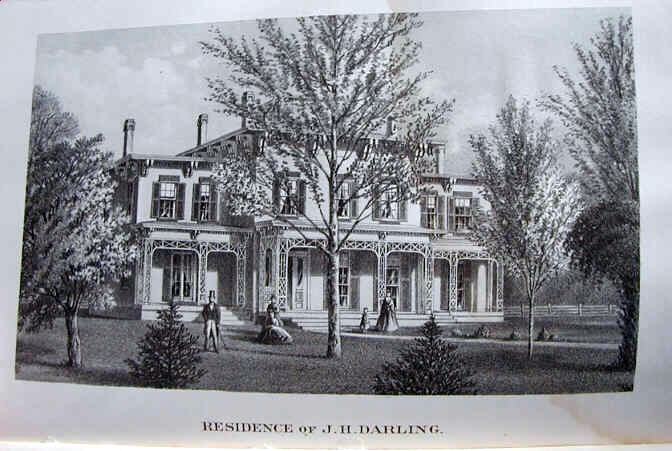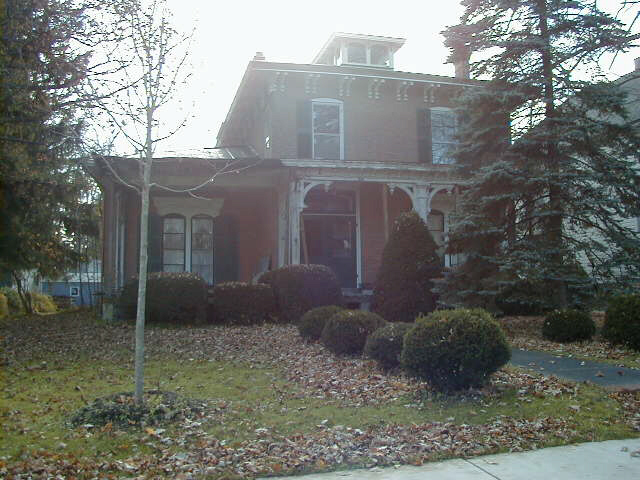Warsaw CemeteryThe interested walker can locate graves of several people associated with the Abolitionism in Warsaw: Augustus Frank, Seth Gates, Andrew W. Young, The Smallwod Family, Daniel Hodge (an African-American Civil War Veteran), and the site for the graves of William and Mary Burghardt. These last are associated with a documented story of the Underground Railroad. In 1849, a pregnant Maryland slave woman, farmed out to work in the District of Columbia, asked the two market gardeners she worked for to help her and her seven-year old daughter escape from a master who was threatening to sell and possibly separate them. The brothers built a hidden box into their produce wagon where she and the little girl would spend twenty-two days confined until the wagon reached Warsaw. Both survived the trip and the mother, who went by several names (Mary, Anna, Sadie) gave birth to a son three or four months after her arrival here. She died of consumption about a year later. The daughter (Eliza or Lila) remained in Wyoming County and eventually married a local African-American barber, William Burghardt. The son was raised in the household of David Clark Martin, also buried in the Warsaw Cemetery, who owned a farm on the West Hill of Warsaw. Several of the houses mentioned in this story still stand.
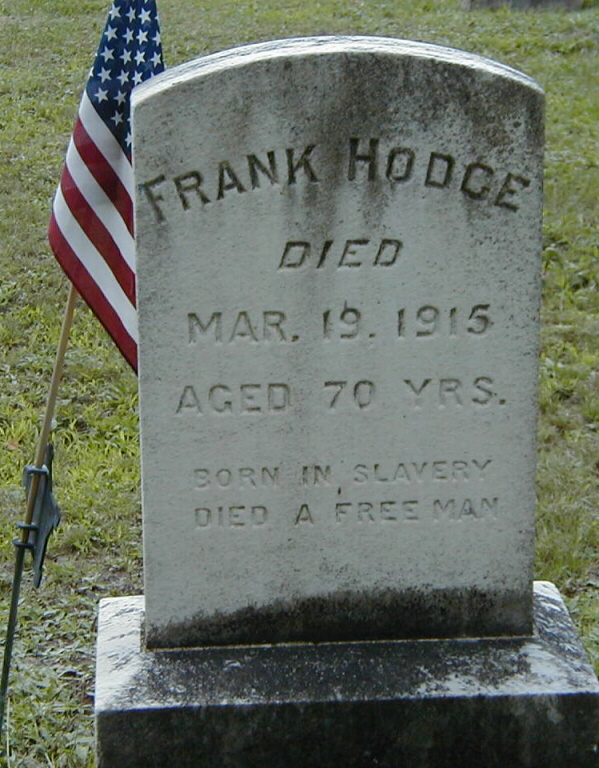
The United Church of WarsawThe Presbyterian Church, the first organized church to be built in Warsaw, was established in 1808. It consisted of ten members and called itself the "First Congregational Church of Warsaw." By the 1830's many of its members had become deeply involved in the anti-slavery movement. In December 1834 its congregation adopted resolutions viewing slavery as "repugnant to the principles of the Gospel." In November 1839 the Liberty Party, the only political party in American history to have its platform become the law of the land, was initiated in a meeting of abolitionists held at the Presbyterian Church. Although some noted abolitionists, including Dr. Augustus Frank, Timothy Buxton, and Frank Miller remained with the original church, a nucleus of people in 1840 opposed to the possibility of mission funds being spent in slave-holding states. The group split off and formed a Congregational Church 100 yards away. The Secretary of the second church was Seth Gates. In 1865, after slavery was permanently abolished in the United States, the wooden Presbyterian Church was replaced by today’s grand brick building. A year later, the present brick building of the Congregational Church, designed by architect A.J. Warner of Rochester, replaced the wooden Congregational Church.
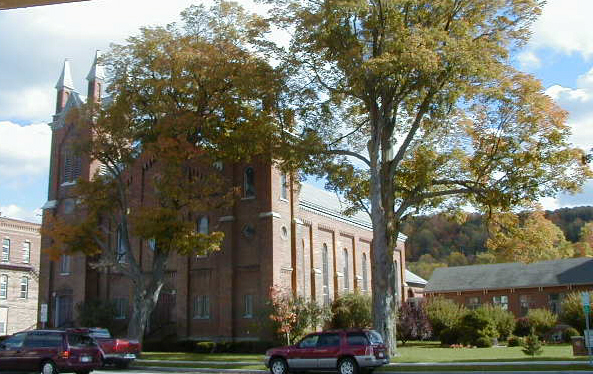
Free Will Baptist ChurchWarsaw's Free Will Baptist Church was the site of pervading anti-slavery sentiment. The attitude of the church on the slavery question may be judged from the fact that a record states that on April 22, 1854, an offering was made to aid fugitive slaves. It has been said the church thus owned some shares in the "underground railroad."
Andrew W. Young, author of the History of the Town of Warsaw, wrote in 1869: "This church has ever been against Slavery. Its records contain some very strong resolutions against it.
The church equally decided in favor of Temperance.
The church has contributed considerably for benevolent purposes. A few years ago, several of its members gave as high as $100 each to help endow a college at Hillsdale, Michigan. In 1867, it raised $330 to aid teachers to instruct the people without regard to color in the Southern States."
Gates HouseThe home of Seth M. Gates after his retirement from the United States Congress, this building is listed on the National Register of Historic Places and has been Warsaw's only museum since 1938. Seth Gates was a prominent foe of the slave interests in Congress and had a bounty of $500 offered on his body in the South. He was also listed as a "conductor" on the Underground Railroad. His home on Perry Avenue was known to shelter runaway slaves. The Gates House was also the meeting place for the Grand Army of the Republic, a fraternal organization for Civil War Veterans. The collections of the Historical Society also include the original chairs of the GAR and its songbooks. Visit the Gates House Museum on Perry Avenue.

Liberty StreetLiberty Street was named to honor the Liberty Party, a political party formed in Warsaw that advocated the abolition of slavery. Ferdinand D. McKay, an attorney and the owner of the land developed along Liberty Street, was also an active opponent of slavery. At the age of 22, he became a leader in the formation of the Anti-slavery Society in Warsaw. He also served as the District Attorney for the County from 1856-1860.
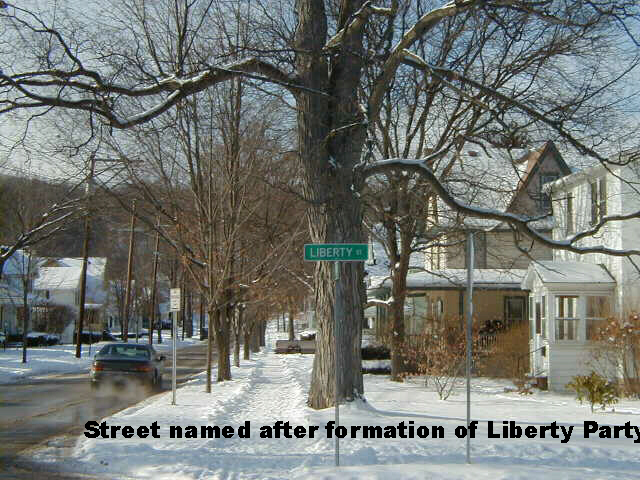
Home of William and Eliza BurghardtWilliam and Eliza Burghardt moved into this home located on the northeast corner of Orchard and Center Streets in 1870. William was an African-American barber who had come from Great Barrington in western Massachusetts to Warsaw during the 1850s. Eliza had escaped from a Maryland plantation in 1850 hidden with her mother in a box built into a greengrocer's produce wagon. They were transported to Warsaw over a 22-day period by one of the Osbourne brothers of Washington, D.C., to whom they had been rented out as workers. Each of the fugitives lived with a different Underground Railroad family here in Warsaw. The mother, usually known as Mary Jones, died shortly after giving birth to a son, Charles, who was raised by the Martin family. In 1866 Eliza Jones married William. The Burghardts remained in Warsaw until their deaths, Eliza in 1898 and William in 1913. The Warsaw Historical Society honored their lives in 2004 by placing grave markers on their unmarked graves in the Warsaw Cemetery.
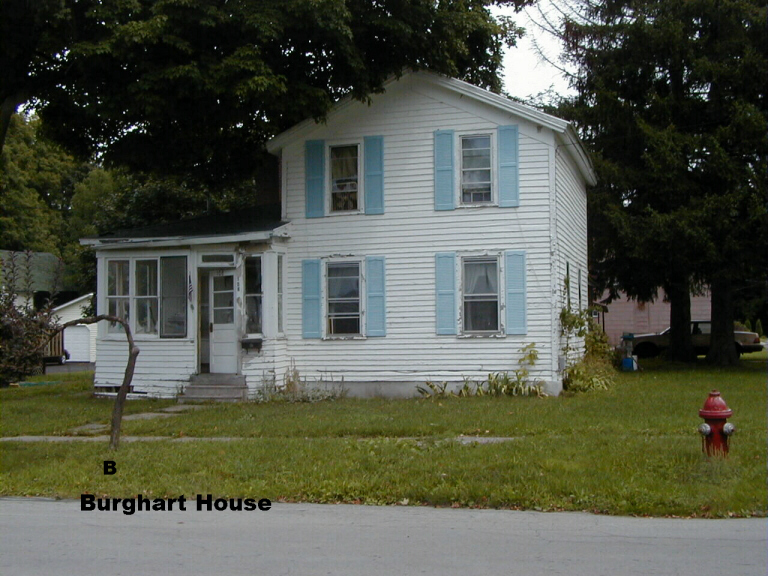
Frank House on Main StreetAn Italian villa built by the Frank family. Dr. Augustus Frank commissioned the design for this home. He was an early member of the Warsaw Anti-slavery Society and a delegate to the conventions forming the American Anti-Slavery in Philadelphia in 1833 and the New York Anti-Slavery Society in Utica in 1835. He died before the house was fully constructed in about 1851. His older son, the Honorable Augustus Frank occupied the house after his mother's 1867 death until his untimely death in 1894. Also a consistent supporter of the abolition of slavery, Augustus, Jr., served in the U. S. House of Representatives from 1858 to 1865. While in Congress his work was integral to passage of the Thirteenth Amendment. The New York Tribune credits the Congressman with ensuring its passage.
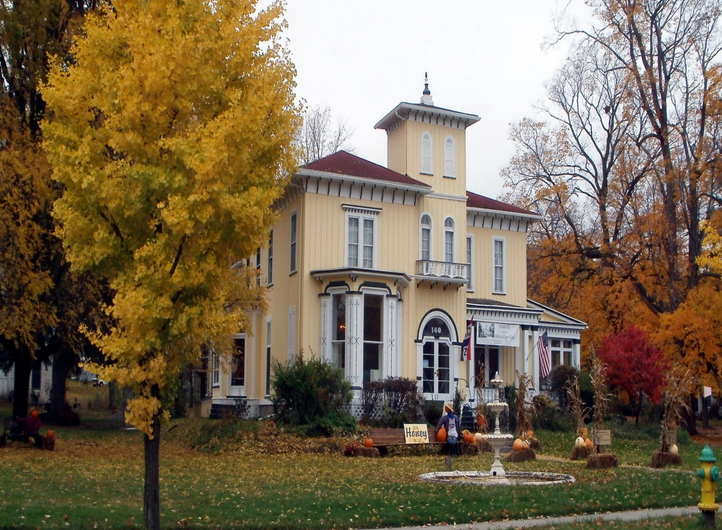
66 Park StreetThis house once belonged to George Washington Frank, younger son of Dr Frank, who with Elbert E. Farman laid out Elm Street, State Street, and East Court Street, and built the four original brick mansions on Park and Elm Streets.
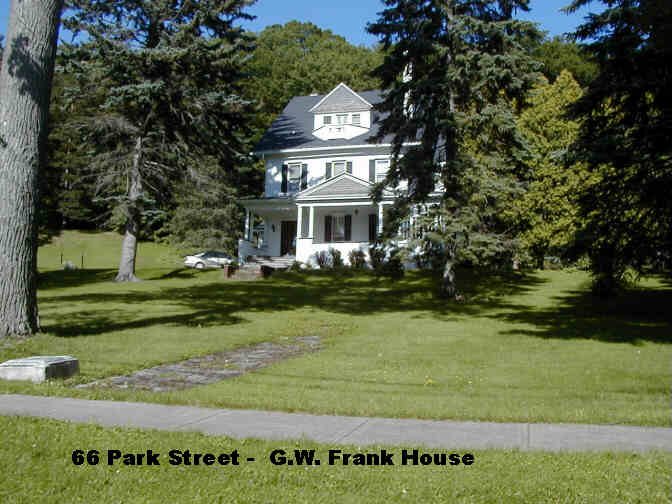
Home of Chauncey GatesThis is the site of a home that was a documented station of the underground railroad, cited by Arch Merrill in his book Underground (Freedom's Road), 1963. In the 1990's the home was torn down, leaving a vacant, grassy lot on Genesee Street facing Prospect Street. It was owned by Chauncey Gates, a brother of Seth M. Gates, who during the underground railroad era had substantial business dealings in Warsaw, including the "Western New Yorker" newspaper. Next door was the home of the George Ackley family, an African-American family of eight. According to the U. S. Census of 1850, Mr. Ackley was a free Negro, born in New York State. His wife, however, was listed as being born in Kentucky, and may have been a fugitive, finding temporary freedom in New York State until the signing of the Fugitive Slave Law in September, 1850. Like an untold number of other fugitives who could no longer live in safety anywhere in the United States in the 1850's, she and her family may have moved on to Canada.
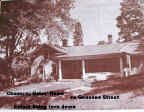
Civil War MonumentErected in 1878 the towering Wyoming County Soldiers' and Sailors' Monument honors more than 1,500 men from Wyoming County who served during the Civil War. The Civil War Monument on North Main includes a pillar from the Philadelphia Exhibition and captured Confederate cannons. William Pryor Letchworth, the owner of the land that became Letchworth State Park, an industrialist and philanthropist, composed the inscriptions on the monument.
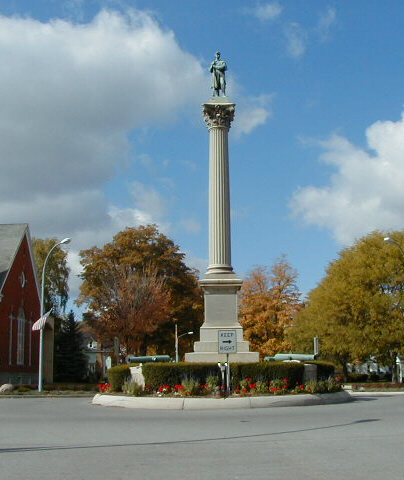
Home of Joshua DarlingBuilt in 1839 on West Buffalo Street, this was the home of Joshua H. Darling and was the first brick building of any kind built in Warsaw. Joshua Darling was an early businessman/banker who strongly advocated the abolition of slavery. Like other abolitionists in the early Warsaw community Darling aided freedom seekers, including Eliza Jones, who was discovered along with her infant brother Charles in his home on August 17, 1850 by a U. S. census-taker. In 1851 Darling founded the Wyoming County Bank of Warsaw and was its managing head for many years. The home was razed for banker Wolcott J. Humphrey's home around 1884.
